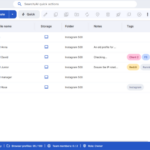When working on a client-server application, developers often face a choice between GraphQL and REST API. Opting for one over the other can significantly impact the speed, scalability, and maintainability of the application.
REST sticks to fixed endpoints, while GraphQL lets clients ask for exactly what they need, offering a more customizable solution.
We’ll start with a quick review of the principles of REST and GraphQL, followed by a comparison before reaching a conclusion.
REST
REST (Representational State Transfer) is the backbone of modern web communications. It’s a set of rules that enable systems to communicate via the internet. At its core, it leverages standard HTTP methods for handling data.
Consider an example: accessing information about a specific product in an online store. Using REST, you might make a request like this:
GET /store/products/123
In this request, GET is the HTTP method, /store/products/123 is the URL, and the server responds with details about the product with the ID 123.
To create a new product, you might use a POST request:
POST /store/products
This POST request would include the details of the new product within its body, enabling the server to process the information and create the product.
Updating a product could be done with a PUT request:
PUT /store/products/123
This would contain the updated information for the product with ID 123.
Finally, if you want to remove a product, you’d use the DELETE method:
DELETE /store/products/123
This DELETE request tells the server to delete the product with ID 123.
These simple HTTP examples showcase the power of REST. It standardizes how we interact with web servers and is the foundation for building APIs and web services. REST’s elegance lies in its simplicity, using familiar HTTP methods for clear and predictable interactions between clients and servers. It’s the language that enables the internet to work harmoniously.
GraphQL
GraphQL, an API query language developed by Facebook, is changing the way we interact with web services. Unlike REST, which fetches predetermined data through specific endpoints, GraphQL offers more flexibility, enabling clients to request precisely the data they need.
In a REST API, if you want information about a user, you might call an endpoint like this:
GET /users/123This URL would typically return a predefined set of data about the user. However, in GraphQL, the approach is different. Instead of fixed endpoints, you send a query specifying the data structure you want, like this:
POST /graphqlWith a query in the body:
{
user(id: 123) {
name
email
posts {
title
content
}
}
}This query is more specific. It requests the user’s name, email, and their posts’ titles and content. GraphQL allows fetching multiple resources in a single request, reducing over-fetching and under-fetching of data.
Moreover, GraphQL’s real power lies in its ability to handle complex relationships. For instance, to retrieve a user’s information along with the comments on their posts, the query might look like this:
{
user(id: 123) {
name
posts {
title
comments {
text
}
}
}
}This flexibility and ability to define precisely what data is needed make GraphQL a compelling choice for modern API development. It optimizes data retrieval and empowers clients to request only the necessary information, making it an efficient solution for diverse web service needs.
Frontend Data Retrieval – Advantage GraphQL
GraphQL simplifies frontend development compared to REST by offering a single endpoint for specifying required data. Unlike REST, which uses multiple endpoints for various data resources, GraphQL’s singular endpoint reduces over-fetching, allowing developers to request precise data. This streamlined approach enhances efficiency, resulting in faster and optimized applications, offering a more developer-friendly and agile method for managing data on the frontend.
Performance
Data transfert – Advantage GraphQL
GraphQL allows to reduced over-fetching, it fetch only required data, minimizing unnecessary data transfer.
Potential Overuse of Bandwidth: GraphQL allows complex queries which might lead to larger data transfers.
Multiple data sources – Advantage GraphQL
GraphQL streamlines the process of combining data from various sources or APIs and delivering it to the client in a unified API call. Conversely, in contrast to REST, which necessitates multiple HTTP calls to access data from diverse sources.
Cache – Advantage REST
With a REST API offering multiple endpoints, it’s simple to set up a web cache to match distinct URL patterns, HTTP methods, or specific resources.
In GraphQL, a singular endpoint, typically an HTTP POST endpoint, handles all queries. Given the potential variability of each query, implementing caching in this scenario becomes more challenging.
Does GraphQL replace REST ?
Both GraphQL and REST manage APIs and serve business purposes. While GraphQL is seen as an alternative to REST, it doesn’t necessarily replace it. They can coexist within a system.
For instance, you can conceal REST APIs behind a GraphQL server. This involves converting REST endpoints into a GraphQL endpoint using root resolvers. Well, this model seems a bit heavy to maintain though … Life demands that choices be made!
Perfect for
REST is suitable for simple data sources where resources are well-defined.
GraphQL is suitable for large, complex, and interdependent data sources.
Conclusion
Selecting between REST and GraphQL involves aligning the technology with the project’s unique demands.
REST, known for simplicity and standardization, suits scenarios with predictable data patterns and caching needs. Conversely,
GraphQL offers flexibility, enabling precise data retrieval and complex relationships.
Consider REST for structured, straightforward applications, and GraphQL for dynamic, evolving data needs.
The decision hinges on factors like data structure, caching, and scalability. Evaluating the specific project requirements will aid in choosing the most fitting approach or even a hybrid solution that maximizes the strengths of both paradigms for optimal results.
And you, do you have a preference or other criteria?
To learn more about GraphQL: https://graphql.org/learn/











Leave a Reply